Is the popular hatchback used a must?
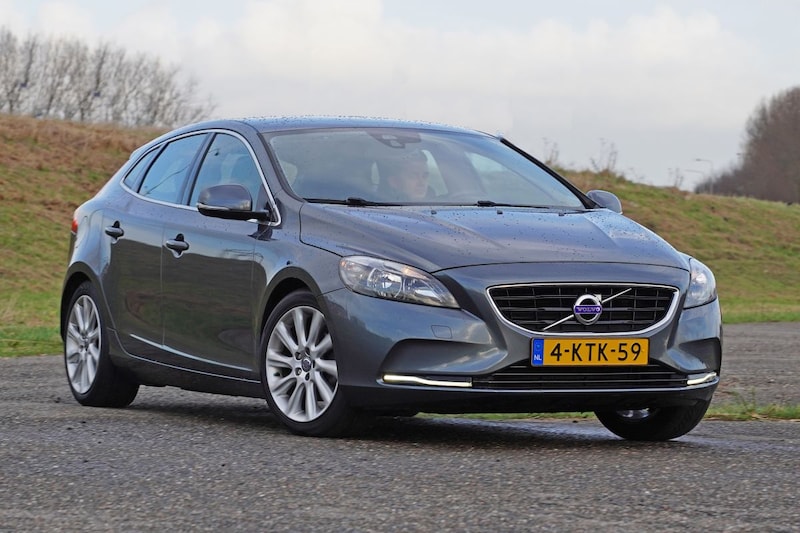
As a new lease car, the Volvo V40 was very popular. But what do you get if you have this popular model on your wish list as a used car? In this buying guide we discuss the V40 as a used car, what are its strengths and weaknesses?
In 2012, Volvo’s model policy is somewhat confusing. If you’re looking for a C30 successor, this V40 is your car. If you prefer to keep driving a saloon or estate because you’re attached to your S40 or V50, you’re out of luck. Sweden is literally looking higher up. Volvo foresees in the noughties that the compact station wagon will lose out to the compact SUV annex crossover. There is still room for a competitor in the premium C segment: the V40, a five-door hatchback, where the V stands for versatile, designed in Sweden, but built in Ghent. Just say the Scandinavian answer to the Audi A3 Sportback, the BMW 1-series, the Mercedes-Benz A-class and the Alfa Romeo Giulietta. Nice to meet you! In 2012, during the first comparison test of the V40, we also obtained a Volkswagen Golf from the German trio mentioned, and in its career as a new car, the Volvo also encountered the Alfa Romeo Giulietta several times in the AutoWeek test arena.
V40: four petrol versions, three diesels
The V40 (model code Y55) is available as petrol (T2, T3, T4, T5) and as diesel (D2, D3, D4) and the car remains an undiminished popular lease car for seven years. Before the Volkswagen diesel scandal, the D2 and D3 were the most popular. Now the emphasis is on the petrol models.
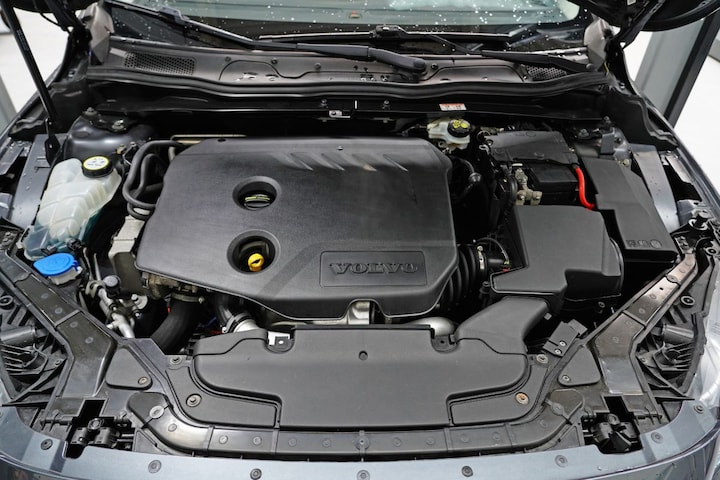
A Volvo V40 with the lightest diesel engine, which is called D2 in Volvo language.
V40 is based on Ford Focus
The basis is the Ford Focus C1 platform. Volvo also sources some engines from that brand and the design comes from Chris Benjamin and Pontus Fontaeus (interior) led by Steve Mattin. They draw a three- and five-door hatchback with a long nose, a rather flat windshield and a steeply rising, high waistline with a fairly low roof. From the rear, it’s a mix of the C30, V40 and XC60 thanks to the signature taillights and high-gloss black connector. The three-door does not reach the production stage.

Always nice seats in the Volvo V40, with this one even with leather.
Difficult to get in
In the case of this V40, the shape clearly takes precedence over functionality in some areas. Thanks to the flat windscreen, the car offers a difficult entry in the front. Due to the tight rear doors with a small opening angle, it is not an entry party there either. In the back seat you have little space, but no great view because of the small windows. You can leave large, hard suitcases at home, because the luggage compartment prefers to swallow foldable weekend bags. In short, a car for singles or childless couples rather than a family. This also applies to the Cross Country (model code Y56), which, in addition to four centimeters greater ground clearance and 4×4 on the top model, adds at most a touch of ‘lifestyle’. It’s a successful style exercise though, as one in five V40s is a CC.

In the Volvo V40 you don’t have a great view in the back seat, except for little space because of the small windows.
Also supplied with a five-cylinder
Because Volvo is still part of Ford at the time of development, it also borrows some engines from the Focus. Think of the 1.6 EcoBoost (150/180 hp) and the 1.6 PSA/Ford Duratorq (115 hp) diesel. If you have a real Volvo engine on your wish list, all you have left is the large five-cylinder B525 (254 hp) or the I5 (150/177 hp). From year 2014, Volvo only uses its own so-called Drive E VEA petrol and diesels, all four-cylinder. In 2016 there is a facelift with, among other things, different headlights.
 The old interior style of Volvo, still pretty nice!
The old interior style of Volvo, still pretty nice!
V40 is outdated inside, but that’s not a bad thing
This Volvo is completely up to date in 2012. Now, eleven years later, it is once again clear how fast innovations go. The busy center console with its tiny buttons is quite outdated, but how bad is that? Take the seats, typical Volvo, stoneware, suitable for long trips.
A D2 is a very economical diesel
If you have a D2, you can easily drive 1 in 20, which makes the small 40-liter tank less annoying. How is it going with an experienced V40? It is widely praised for its finish, but there are also very few complaints about the technique. There are plenty of V40s with more than two tons on the counter. In fact, half a million is also not uncommon, but those are mainly diesels. That is why this time we go for the former mainstream leased D2 to find out how such a car holds up during its second life with a private individual who drives a lot. A V40 D2 Summum with an incredibly low mileage – 106,000 – is ready for a test drive at Van Duijn Nottelman.
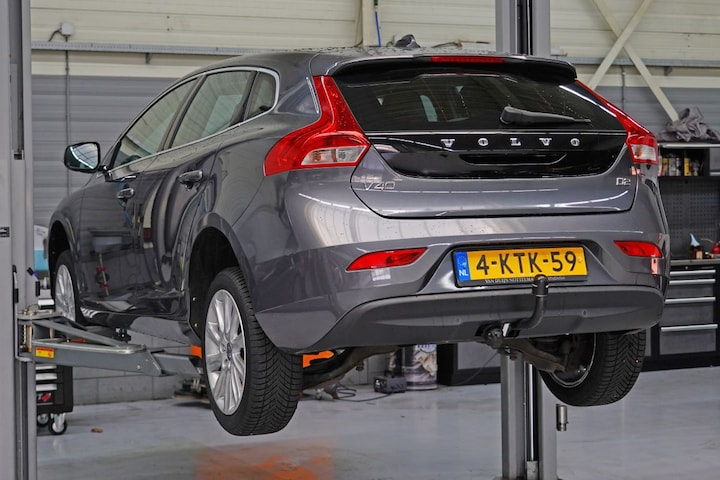
The Volvo V40 that will be taken along first goes up the bridge. It has a low mileage for a diesel: 106,000 kilometers.
V40 has few weaknesses and malfunctions
Volvo has its business together with the V40. The model is robust and has few serious shortcomings or malfunctions. Body and bottom group are well treated against rust. Nevertheless, it does not hurt to check the car for any damage. Open the hood, look at the beams, open the boot lid and look under the mat. Also bend your knees to inspect the flanks for irregularities. The interior has hardly any weaknesses. It is excellently finished and the seats offer the typical Volvo comfort even after 200,000 kilometers. Well come on, the trunk mat rolls quickly. If you can view the car on the vehicle lift, you will see that the brake lines do not corrode, but the suspension arms and subframes do. That isn’t too bad, by the way. Mechanically, there is little to be said about the V40. Yet every car has its specific ailments. Steering ball joints usually show play after 150,000 kilometers, as do the ball joints on the connecting rods of the stabilizers.
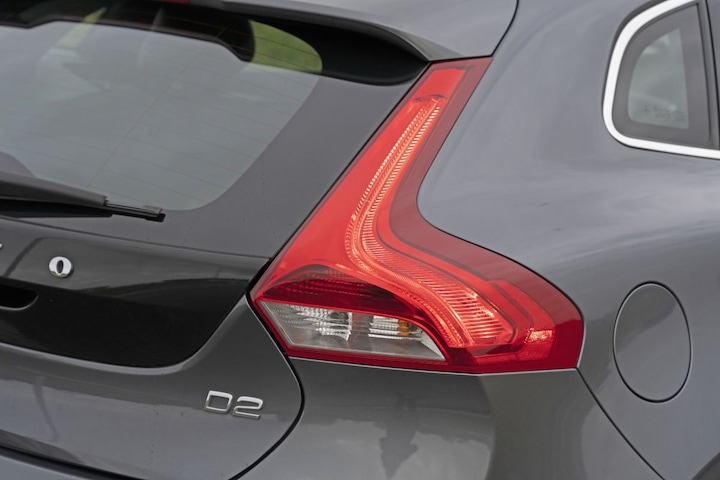
You often come across the Volvo V40 as a D2, or as a D4. That is the powerful diesel that, just like the D2, had a low addition for the business driver.
All engines good reputation
All engines, both Ford’s and Volvo’s own, have a good reputation. However, they attach a weighty condition to it: they like to be pampered with regular maintenance. Almost naturally there are problems with EGR related things, such as the EGR cooler and valve – on the diesels, especially on the D4. You notice this when the power source means. An (expensive) modification set solves these problems. In addition, Volvo has introduced a software update that results in less power and higher consumption. In the versions with manual transmission (D2), the clutch slave cylinder and the flywheel regularly cause problems. When you go for a test drive, also pay attention to the height of the engagement point of the clutch and rattling noises and vibrations coming from the said flywheel. You can also feel whether the engine is holding back and see whether the engine fault light lights up.
Important in all engine versions are the timing belt with a replacement interval of 150,000 kilometers and the strict oil change interval. Check the service book whether those services have been performed. A sticker in the engine compartment sometimes helps.
The start-stop system does not always work smoothly and in some cases even causes a stop. The causes vary from a broken module to a problem in the battery itself.
Sometimes plug connections loosen by themselves. A modern car like the V40 simply has numerous sensors. Think of the lane assistant, tire pressure warning and keyless entry. It is a good idea to check all functions before purchase. There have been recalls for a problem with the fuel line, intake manifold overheating on the four-cylinder diesels, the left tail light and potentially malfunctioning airbags.
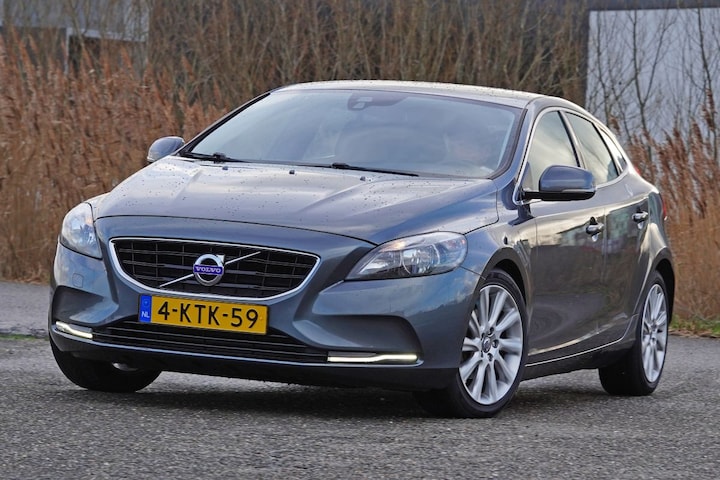
Solid car with a good seat, but a hard chassis
You can definitely add a V40 to your list of possible premium C-segment cars. After all, it is a Volvo and then you always do well here in the country. It feels solid and has good engines and, moreover, you sit in it like a prince. You have to take into the bargain: a hard chassis and the limited space and clarity. The trick is to put together and find the right version and the right engine for your purposes. Preferably you take one with a stamped service book.
In 2018, when the model was still fresher and new in the showroom, we already made this video about the Volvo V40 as an occasion.
.
– Thanks for information from Autoweek.nl